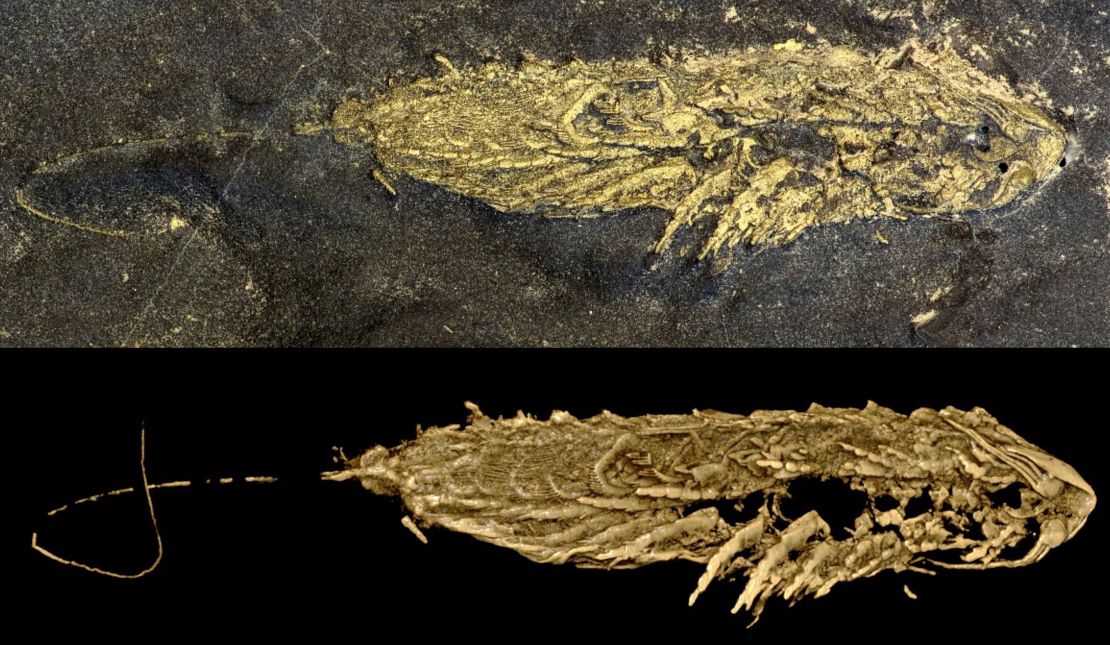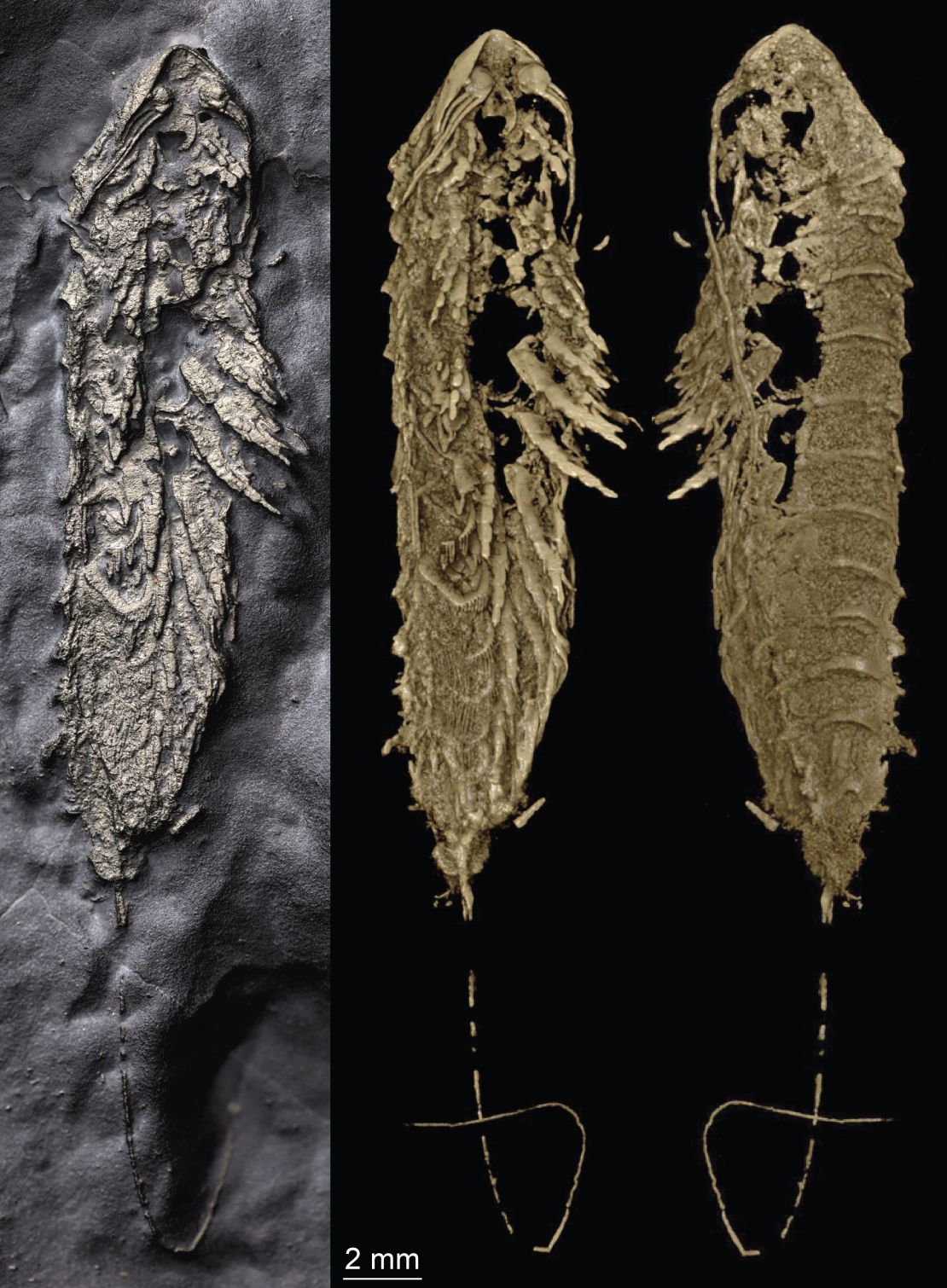
Sign up for CNN’s Wonder Theory science newsletter. Explore the universe with news on fascinating discoveries, scientific advancements and more.
A shimmering ancient fossil unearthed in New York state looks like a piece of finely crafted jewelry, but it’s also a portal into the natural world 450 million years ago.
The striking fossil is a newly identified species of arthropod, a distant relative of modern-day horseshoe crabs, scorpions, and spiders, that slightly resembles a modern-day shrimp. The creature lived on the ocean floor during the Ordovician Period (485 million to 444 million years ago) at a time when life had only a tentative foothold on land.
Named Lomankus edgecombei, the arthropod is a remarkably bright golden color because it’s preserved in three dimensions by iron pyrite — a mineral better known as fool’s gold.
It’s a highly unusual way for a fossil to form.

The fossil, one of five similar specimens described in a paper published Tuesday in the journal Current Biology, was found in a fossil-rich area near Rome in central New York state, known as Beecher’s Bed.
Lead study author Luke Parry began examining the fossils when he was a postdoctoral researcher at the Yale Peabody Museum, where three of the specimens were held. A collector donated two other specimens to Yu Liu, a coauthor and professor of paleobiology at Yunnan University in China. They are now also part of the Peabody collection.
Because pyrite is so dense, Parry was able to scan the fossil using computed tomography to reveal hidden details of its anatomy. The discovery sheds light on why arthropods evolved appendages protruding out of their heads.
“I was pretty blown away by how well preserved they were and having worked on pyritised burrows before I knew that they would CT scan really well,” Parry, now an associate professor of paleobiology at the University of Oxford, said via email. “Preservation in pyrite of this kind is extremely rare. In the last half a billion years there are only a handful of examples of places where this occurs.”

‘Sparkles like gold’
Lomankus is an extraordinary find, said Steve Brusatte, a professor of paleontology and evolution at the University of Edinburgh’s School of GeoSciences.
Brusatte, who was not involved in the study, said it was “one of the most visually stunning fossils I’ve ever seen. It sparkles like gold and looks like it belongs in an art museum.”
“The fool’s gold shows fine details of many of the parts of this arthropod’s body, including the little wispy sensory structures sticking off of its head,” he said. “Normally such delicate, gossamer things would be obliterated once an animal died and was buried, but here the fool’s gold locked them into stone.”
The species, which belongs to an extinct group called megacheira, was named after arthropod expert Greg Edgecombe, a merit researcher at London’s Natural History Museum.
Other megacheirans used their appendages to capture prey. Lomankus, which had no eyes, likely used the appendages to sense the ocean sediment environment in which it lived, according to the study.
The arrangement of features on the species’ head was similar to that of living arthropods, which means its appendages are the ancient equivalent of insect antennae or the mouthparts of scorpions or spiders, Parry said.

Today, there are more known species of arthropod than any other group of animals on Earth. Parry said their adaptable head and appendages, which he described as a “biological Swiss army knife,” were one reason why the group had thrived for so long.
“Sometimes we see fossils preserved as opals or quartz crystals, or in this case, fool’s gold,” Brusatte said.
“It’s remarkable, like the whole body of this little arthropod has turned into a golden piece of jewelry,” he added. “And that makes the fossil not only beautiful, but scientifically important.”




